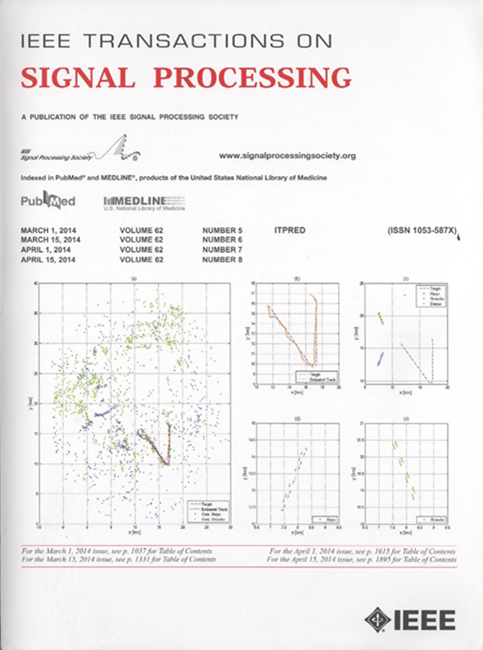D2CN:分布式深度卷积网络
IF 4.6
2区 工程技术
Q1 ENGINEERING, ELECTRICAL & ELECTRONIC
引用次数: 0
摘要
随着分布式系统的快速发展,基于深度学习的多源数据处理受到了广泛的关注,特别是对于多通道网络。然而,传统方法缺乏强大的理论基础,各通道数据缺乏必要的相互作用,鲁棒性不足。本文提出了一种分布式深度卷积网络(D${}^{2}$CN)来克服这一问题,该网络通过将广义奇异值分解(GSVD)与Hankel卷积框架原理相结合来解释这一问题。具体来说,我们利用GSVD的特征提取能力通过前向/后向传播来执行数据交互,其中使用公共基设计大量输入,并通过训练一组共享的正确基来实现可靠的性能。我们将讨论网络的可伸缩性,以展示其在性能和健壮性方面的好处。此外,我们证明了编码器-解码器方案允许网络适用于广泛的反向情况。最后,我们通过对经典图像去噪的数值实验证明了D${}^{2}$CN相对于其他基本网络的优越性。本文章由计算机程序翻译,如有差异,请以英文原文为准。
D2CN: Distributed Deep Convolutional Network
With the rapid growth of distributed systems, deep learning-based multi-source data processing has drawn extensive attention, especially for the multi-channel networks. However, the conventional ones lack a strong theoretical foundation and the data in each channel lack necessary interactions, giving rise to insufficient robustness. Here we derive a network termed as distributed deep convolutional network (D${}^{2}$ ${}^{2}$
求助全文
通过发布文献求助,成功后即可免费获取论文全文。
去求助
来源期刊

IEEE Transactions on Signal Processing
工程技术-工程:电子与电气
CiteScore
11.20
自引率
9.30%
发文量
310
审稿时长
3.0 months
期刊介绍:
The IEEE Transactions on Signal Processing covers novel theory, algorithms, performance analyses and applications of techniques for the processing, understanding, learning, retrieval, mining, and extraction of information from signals. The term “signal” includes, among others, audio, video, speech, image, communication, geophysical, sonar, radar, medical and musical signals. Examples of topics of interest include, but are not limited to, information processing and the theory and application of filtering, coding, transmitting, estimating, detecting, analyzing, recognizing, synthesizing, recording, and reproducing signals.
 求助内容:
求助内容: 应助结果提醒方式:
应助结果提醒方式:


